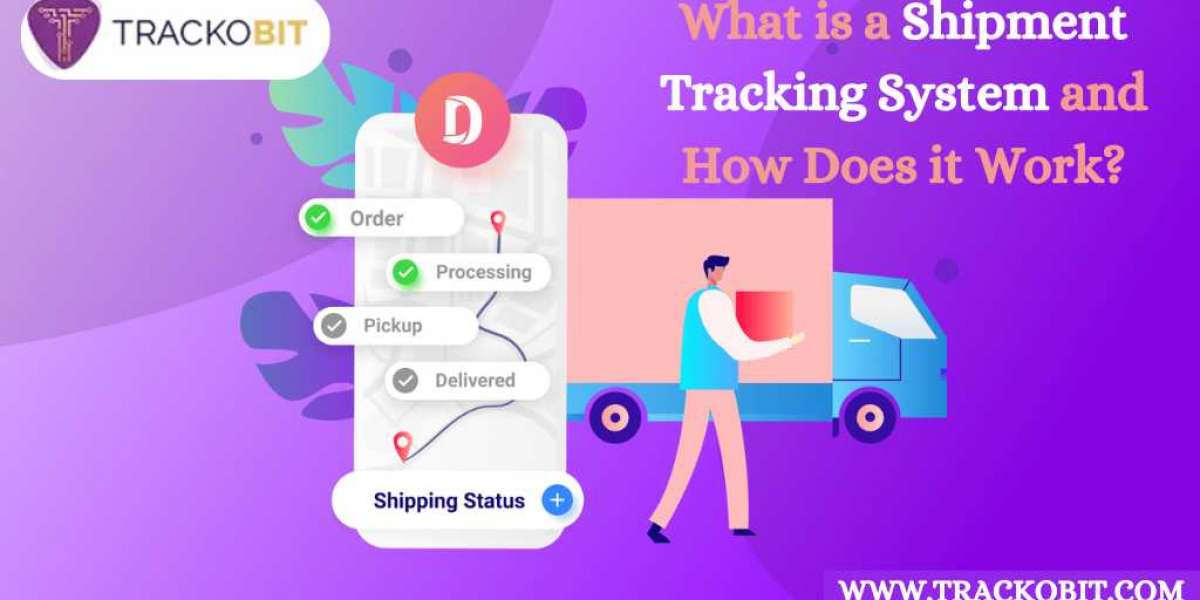Tracking shipments is important for every logistics industry. It is necessary to ensure goods are safely dispatched and arrive at designated locations. Hence, relying on back-dated systems or methods is no longer enough. You need something extra.
To deal with the complexities of supply chains, a shipment tracking system is a much-needed thing.
The tool lets businesses monitor, manage, and optimize logistics operations.
This article is all about what are shipment tracking systems, their functionality, and how they help businesses achieve big.
So, What is a Shipment Tracking System?
A shipment tracking system is a digital platform that helps track delivery vehicles and goods in transit — during the entire supply chain process. The system provides real-time information on shipments' live location, delivery status, and other real-time updates.
With such visibility into transit operations, delivery businesses ensure timely deliveries, improve operational efficiency, and meet client satisfaction. Industries where transparency and timely deliveries are crucial, leverage such software.
Key Features of a Shipment Tracking System
- Live GPS Tracking - It provides live and precise location updates on delivery vehicles and shipment locations in transit.
- Delivery Progress/Status Updates - It provides quick heads-up about key events such as dispatch, departure, arrival, or delays.
- Centralized Dashboard -It offers an analytical dashboard over which supply or last-mile delivery managers can monitor the journey of multiple shipments — simultaneously.
- Integration with IoT Devices - Most shipment tracking software solutions are compatible with temperature and humidity sensors that display the readings in case of sensitive goods.
- Automated Alerts - It has options for custom notifications that can alert for any potential delays, route deviations, or other anomalies.
- Proof of Delivery (POD) - It also has a digital POD option. Delivery agents can generate POD in the form of signatures, photos, and OTPs.
Working of Shipment Tracking System - Step-by-step
- Shipment Dispatching Initiating
First, the tracking system inputs all the details, aligns all the deliveries, and matches this with the right carrier for dispatching.
- Live Shipment Monitoring
It further leverages GPS technology and IoT sensors to collect geospatial data about the shipment's location, condition, and more.
- Data Transfer to the Dashboard
All the collected information is shared over analytical and centralized shipment software through a cellular network or satellite.
- Data-rich analysis and Reporting
The system further processes the collected data to help draw insights. This helps make decisions to prevent delays by optimising routes processes.
- Updates to Customers
The software further lets businesses share delivery agents’ tracking IDs that help keep customers in the loop. This helps keep up customers’ trust and acceptance.
Benefits of a Shipment Tracking System
- 100% Better Visibility - The software lets managers have complete visibility of shipment status. This enables spot-on decision-making.
- Better Operations - Such shipment tracking solutions offer smart tools that help plan optimised routes. This helps reduce delays and improve delivery potential.
- Improved Customer Experience - The software offers real-time updates to customers real-time updates. This helps foster great trust and reliability.
- Cost Savings - The software leads to more automated workflows. This reduces the risks of manual errors. As a result, operational costs are reduced exponentially.
How Shipment Tracking Software Gives You a Competitive Edge
Choosing a state-of-the-art shipment tracking system like TrackoMile helps explore advanced features suitable for modern logistics businesses.
Built with scalability and precision in mind, here’s how such shipment tracking solutions empower businesses to streamline their supply chains and deliver exceptional results.
- Live GPS Tracking
Its offering of real-time GPS tracking helps fetch current to historic shipment locations. The intuitive interface of such shipment tracking software solutions helps businesses monitor every movement and gives control over the operations.
- Route Optimization
The system helps enable route optimization for logistics operations after factoring in conditions like traffic patterns, road conditions, delivery priorities, etc. This helps businesses choose the most efficient routes, helping to reduce time and fuel spending.
- Smart Alerts
The system helps enable automated alerts for events such as delays, route deviations, geofence violations, delays, or other critical issues.
- IoT Integration
Most shipment tracking software offers seamless integration with IoT sensors for temperature or humidity monitoring. Very suitable when sensitive or perishable goods are transferred.
- Proof of Delivery (POD)
The system has smart digital POD (proof of delivery) options to validate successful deliveries. It lets delivery agents take proofs from customers/clients in the form of:
- e-signatures
- Photographic evidence
- OTP
- And more
This helps simplify the confirmation process and reduces disputes.
- Customizable Dashboards Dynamic Reports
Such shipment tracking solutions offer a smart analytical dashboard that reflects the most relevant metrics insights and reports. This helps identify bottlenecks and improve overall efficiency.
Industries That Must Depend on Shipment Tracking Software
- For Logistics Providers
Logistics industries involved in the last mile delivery can use software to ensure timely deliveries and reduce operational costs.
- For Retailers
With features like ePOD and real-time tracking, the software helps elevate trust by providing transparency and reliability in last-mile deliveries.
- For Manufacturers
The software for manufacturers helps ensure that their raw materials and finished goods are transported efficiently. Very helpful in preventing disruption in production schedules and reducing downtime.
- For Cold Chain Operators
Such shipment tracking software solutions when integrated with smart IoT sensors, help sensitive shipments remain within required environmental conditions. This helps keep up the right quality of the products.
Final Words
A shipment tracking system is not just a simple to-acquire software. It’s a necessity to gain visibility, improve efficiency, and meet customers’ satisfaction. In short, it’s a backbone for supply chain management.
This potent software enables businesses to relish visibility and awareness on multiple shipments in one go. This makes shipment tracking software a go-to solution for shipment tracking needs. Irrespective of the fact you are a logistics provider, retailer, or manufacturer, the software ensures your deliveries are always on time and arrive in good condition.
Source : What is a Shipment Tracking System and How Does it Work?







